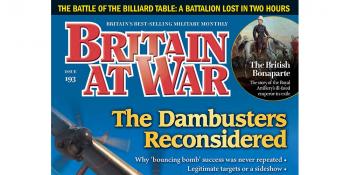A vital escape aid designed by a real-life ‘Q’ and issued to RAF’s bomber crews took the form of the humble pencil. Craig Moore gets to the point
During World War One, few British servicemen who were captured by the enemy managed to successfully escape to their own lines. For one, they lacked the tools and relevant training. Plus, they had none of the established escape routes throughout occupied Europe so bravely established in the next war. Nor was there meaningful support from British organisations.
However, when the threat of war with Nazi Germany loomed, the War Office consulted the Directors of Naval, Military and Air Ministry Intelligence about facilitating escapes.
The outcome of the discussions was the recognition that there was a need for a joint service approach. On December 23, 1939, a new section was formed within the Directorate of Military Intelligence.
This was MI9, established under the initial leadership of Brigadier Norman Crockatt DSO, MC. The new section was to work in close connection with the three services and was responsible for the preparation and execution of plans to enable the escape of British POWs in Germany or elsewhere. It was also tasked with arranging instru…




